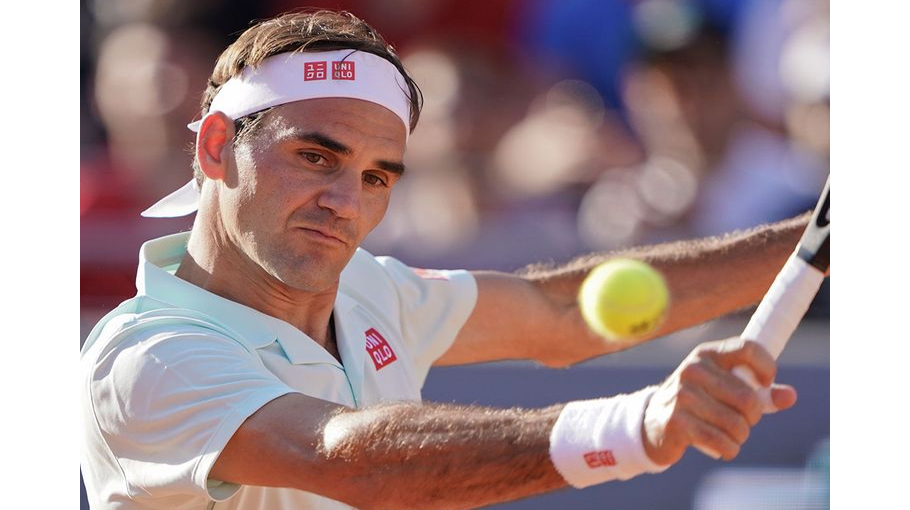How Roger Federer enthralled us for 20 years

Roger Federer and me, we never met. Our paths never crossed. But he’s been part of my life for around 20 years. I celebrated his triumphs and brooded over his losses. Even justified his losses with my friends and colleagues.
I started playing tennis quite late; cricket was my obsession. But when I picked up a tennis racquet, I tried to model my shots on Federer’s. Part of it was the fanboy in me, partly because his technique was so perfect that Federer could be a role model for any aspiring tennis player.
How did I fare? Not so well. I could hit a one-handed backhand with topspin down the line. But I could never whip it crosscourt like the maestro. Federer’s serve was magical: it wasn’t the fastest on the circuit, but he could hit aces at will. Much of it was due to its placement. The contact point of every single serve was the same, irrespective of the variation. My serve sucked: on a good day, it worked well; on other days, double faults were the norm.
My love for serve and volley
Why did I idolise Federer? He was unlike many of the earlier players I revered. John McEnroe was a favourite; I found Bjorn Borg’s base-hugging game boring. McEnroe is anything but boring with antics and heavily sliced serves, not to mention his touch game. It was magical.
Serve-and-volleyers were my favourite: McEnroe’s drop volleys were more enchanting than the counter-punching game of Jimmy Connors. As for drop volleys, the best I’ve seen is from Vijay Amritraj, who lunged across to meet a rasping crosscourt passing shot from Slobodan Zivojinovic. The ball died in the forecourt of the Delhi Lawn Tennis Association court. Amritraj and Davis Cup are the stuff of Indian tennis folklore. Wimbledon was my favourite tournament since serve-and-volleyers thrived on the hallowed turf. Along the way came the wunderkind from Liemen, Germany. Boris Becker became an overnight sensation with his booming serves and diving volleys, the youngest Wimbledon champion. I was in a dilemma when Stefan Edberg and Becker faced off. There was no confusion when Pete Sampras reeled off five Wimbledon titles.
Then something strange happened in 2001. A long-haired Swiss ended Sampras’s reign at Wimbledon. That was when I took notice of Federer; he had a beautiful game. He would be an excellent heir to Sampras, I thought. Over the years, Federer developed his backcourt so much that he could go toe-to-toe with another counterpuncher like Andre Agassi.
The all-court game worked well enough for Federer to win 20 Grand Slam titles. Much as I admire his single-handed backhand down the line and the whipped crosscourt backhand passing shots, I longed to see him serve and volley. It came back as the Swiss became older and sought to finish the points quickly.
Rafael Nadal and Novak Djokovic may have more Grand Slam titles, which put them in pole position for the Greatest of All Time title. To me, Federer remains the best. His is a career I have followed from the beginning to the end. Towards the end of his career, Federer seemed to have lost the mental edge; Nadal and Djokovic handled crunch situations better.
I remember the 2009 US Open final when Federer had Juan del Porto on the run. Uncharacteristically, he allowed Del Porto to claw back into the match and eventually lost it. That was very unlike Federer.
On another occasion, the 2011 US Open semifinal went to five sets, and Federer held two championship points while serving against Djokovic. An ace and it will be done, I said to myself, willing Federer to slam it down the middle. The Swiss opted to serve wide to Djokovic’s forehand, but it wasn’t wide enough. The Serbian had taken a couple of strides before the ball was delivered and was at the right spot to unleash a fiery forehand winner.
That loss hurt; Federer was very bitter. Djokovic admitted that it was a gamble, which paid off. Federer imploded in 2019 Wimbledon final too, when he blew two championship points against Djokovic.
Well, I’m not complaining. Federer has given me more than 20 years of amazing tennis. For that, I’m grateful. We may not see another Federer in a long time.
I had a chance to meet Federer. Many years ago, my colleagues and I came across the tennis supremo at the Shakespeare and Co restaurant in Al Wasl Road. We had nipped out of the office for coffee and carrot cake when a colleague pointed to the far corner and said: “That looks like Federer.” We all craned our necks, and a friend said: “Can’t be him”. “What’s he doing in Dubai,” I asked. We couldn’t be sure, so we went back to the office.
Days later, we learnt that Federer had set up base in Dubai.




